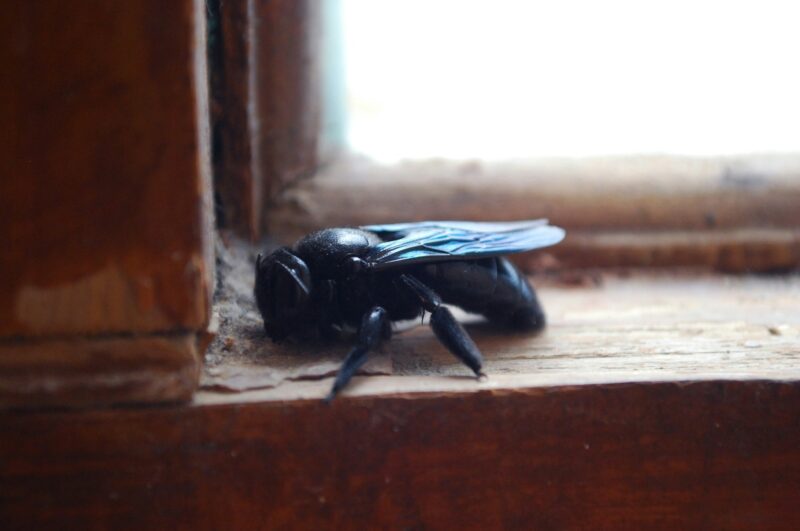Could You Share Your Home with Pests Without Knowing It?
No one likes to think about uninvited guests living rent-free in their homes, especially if those guests are pests. However, pest infestations are more common than you might think.
From cockroaches and ants to rodents and termites, household pests can create significant problems if left unchecked. The key is recognizing the signs early.
If you’ve noticed strange smells, sounds, or damage around your home, you could be sharing your space with unwelcome critters.
Today, we’ll break down the top signs that you may have a pest problem at home, along with practical pest control tips to help you address the issue. After all, a thorough home inspection can save you from bigger headaches down the line.
Top Signs of a Pest Infestation
Pests can be sneaky, but they usually leave clues. Here are the most common signs that indicate your home could be under siege.
1. Unusual Noises
If you hear strange noises, particularly at night, it could mean pests are lurking in your home. Scratching, scuttling, or faint squeaks often point to rodents, such as mice or rats. These sounds might come from within your walls, attic, or crawl spaces.
- Pest Control Tip: Inspect areas where noises are loudest, paying special attention to dark or hidden places.
2. Droppings or Tracks
Pests often leave droppings behind. Rodent feces, for example, are small, black, and pellet-shaped, while insects like cockroaches shed skins or leave egg casings.
You may also notice faint tracks or smudge marks along walls or baseboards, especially if you have a mouse problem.
- Pest Control Tip: If you spot droppings, clean the area immediately and inspect further to locate the infestation source.
3. Damage to Your Home
Obvious physical damage is a strong indicator of a pest problem. Here are some specific types of damage:
- Teeth marks or gnawed wood may point to rodents.
- Chewed electrical wires are a particular hazard, often caused by rats or squirrels.
- Holes and tunneling within woodwork or furniture could suggest termites.
- Damaged food packaging might mean you have ants or pantry pests lurking.
- Pest Control Tip: Conduct a home inspection every few months to identify and address early damage.
4. Evidence in Food Storage Areas
Pests like mice, ants, or cockroaches are drawn to food. If you notice broken packaging, crumbs, or a trail of ants leading to your pantry, consider it a red flag.
- Pest Control Tip: Store all food in airtight containers and clean pantry shelves regularly.
5. Strong, Unpleasant Odors
Many pests emit strong smells that can be a dead giveaway of an infestation. For instance:
- Cockroaches produce a distinct oily or musty odor
- Rodent infestations may carry a foul, ammonia-like smell
- Dead pests can lead to the unmistakable stench of decomposition
- Pest Control Tip: An intense smell should prompt a deeper investigation into hidden spaces like basements, crawl spaces, or inside walls.
6. Swarms or Visible Pests
Sometimes the evidence is right in front of you. Large gatherings of pests such as bees, wasps, or even flies around entry points like windows, doors, or eaves can indicate a problem.
- Pest Control Tip: Don’t attempt to handle swarms like bees or wasps on your own. Call a professional exterminator.
7. Skin Irritations or Allergic Reactions
Bites or irritations, especially during the night, may point to bed bugs or fleas. Some pests can even trigger allergies in susceptible individuals.
- Pest Control Tip: If you or your family members experience skin issues or breathing issues, a pest infestation could be to blame. Act quickly to eliminate the root cause.
Why Early Detection Is Crucial
A pest problem doesn’t go away on its own—in fact, it usually worsens with time. Beyond causing inconvenience, pests can pose significant health risks and damage your property.
Termites can weaken the structural integrity of your home, while rodents may carry diseases like salmonella.
Early detection can help you avoid expensive repairs and health risks. A proactive home inspection will catch issues before they escalate, saving you time, money, and unnecessary stress.
How to Prevent and Manage Pests
While catching pests early is essential, prevention is equally critical. Here are some quick pest control tips to keep your home pest-free:
1. Seal Entry Points
Many pests enter through small cracks, gaps, or holes. Inspect and seal windows, doors, and foundations to keep critters out.
2. Practice Good Hygiene
Cleanliness is your first line of defense. Wipe down counters, vacuum frequently, and take out the trash regularly to eliminate potential food sources.
3. Manage Outdoor Spaces
Trim shrubs and trees near your home to prevent pests from using them as bridges to your property. Clear debris like firewood or leaf piles, as these can serve as nesting spots.
4. Use Natural Remedies
Cedar chips, essential oils, and diatomaceous earth are all-natural remedies that deter pests without introducing harsh chemicals into your home.
5. Call in Reinforcements
Sometimes, it’s best to leave the tough jobs to trained professionals. Pest control experts can assess your situation and provide tailored solutions to keep your home pest-free for the long term.
Take Proactive Steps to Keep Pests at Bay
Now that you know the telltale signs of a pest infestation, you’re better equipped to take action and protect your space. Remember, regular home inspections play a vital role in identifying potential pest issues early.
Pairing this with smart preventative measures will go a long way in maintaining a clean and pest-free environment.
If you’re ready to learn more about keeping pests away or need help with a current problem, reach out to your local pest control service for expert advice. Acting now could save you significant time, stress, and expense in the future.

